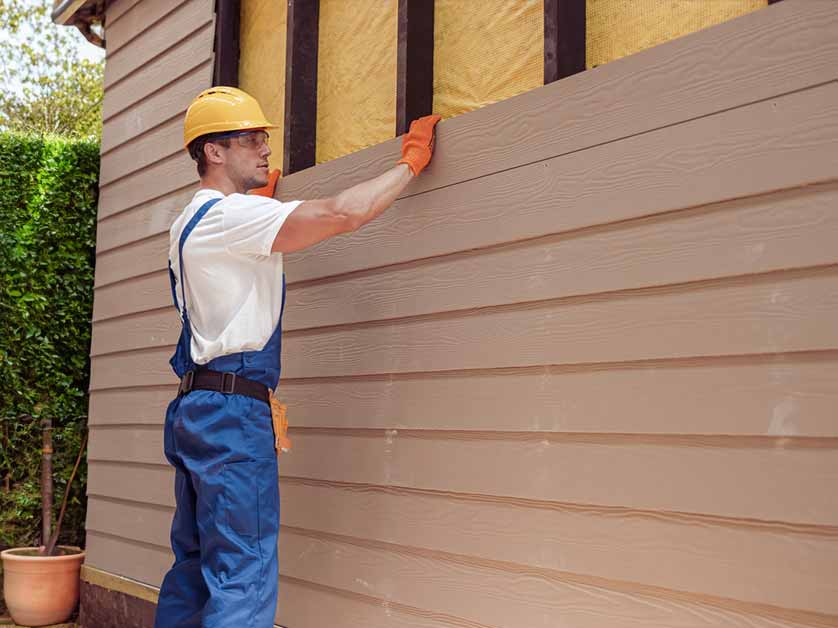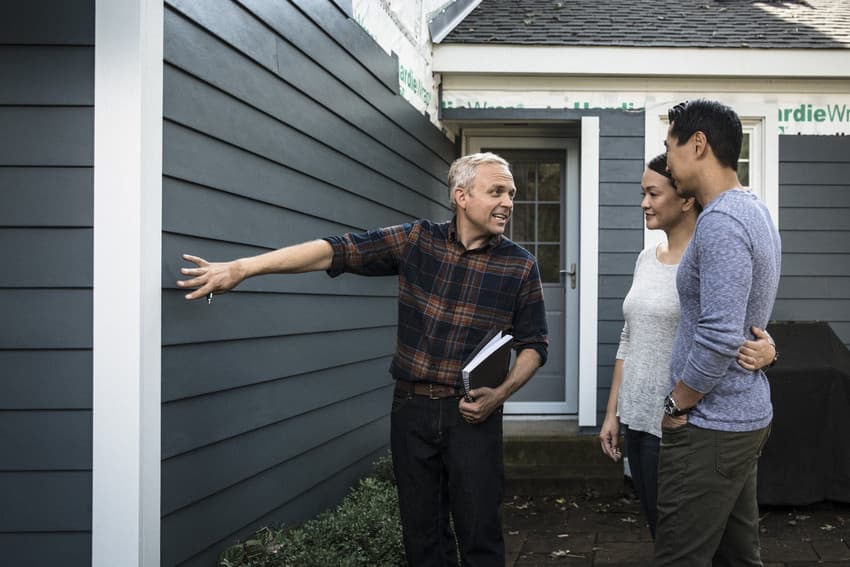Morris Siding Contractor with Years of Expertise in Home Exterior Upgrades
Morris Siding Contractor with Years of Expertise in Home Exterior Upgrades
Blog Article
The Vital Guide to the Different Types of House Siding and Their Distinct Advantages
In the world of home renovation, selecting the appropriate house siding is an essential decision that impacts both visual charm and useful efficiency. With so lots of choices to think about, which exterior siding material really stands out for your particular project?
Wood House Siding
Timber home siding, a prominent selection for household outsides, supplies an ageless aesthetic that combines natural elegance with architectural integrity. This siding product is offered in different designs, including clapboard, shingles, and board-and-batten, permitting house owners to customize their façade to match their design preferences. Timber home siding is normally crafted from resilient species such as cedar, redwood, or ache, which are recognized for their resilience and ability to endure ecological stressors.
One of the key benefits of wood exterior siding is its superb insulation residential or commercial properties, which can contribute to energy effectiveness and reduced heating prices. Additionally, wood house siding is naturally degradable, making it an eco-friendly option when sourced sustainably. Regular upkeep, including painting or discoloration, can extend its life expectancy and improve its appearance, enabling homeowners to preserve the natural charm of the wood.
Nonetheless, potential disadvantages include sensitivity to bugs, rot, and climate damage, demanding adequate therapy and maintenance - morris siding contractor. Regardless of these issues, when properly taken care of, timber siding can give a resilient and lovely remedy that enhances the character of a home while using a cozy, inviting environment

Vinyl Home Siding
Vinyl siding has actually become a leading selection for property owners looking for a low-maintenance outside choice that combines longevity and cost. This versatile product is crafted from polyvinyl chloride (PVC), making it resistant to numerous climate condition, consisting of moisture and UV rays. As an outcome, plastic home siding does not warp, rot, or discolor, ensuring lasting visual appeal.
Among the primary benefits of plastic house siding is its substantial series of colors and designs, permitting property owners to attain the preferred try to find their residential property without the need for regular repainting. In addition, plastic home siding is very easy to set up, which can dramatically reduce labor expenses throughout building and construction or improvement jobs.
Plastic house siding also adds to power performance. Several alternatives feature insulation backing, which enhances thermal performance, assisting to preserve comfy interior temperatures and potentially reducing energy expenses. Its smooth surface facilitates very easy cleansing, calling for just regular cleaning with a garden tube to remove dirt and particles.
Fiber Concrete Siding
Fiber cement siding has gotten grip among building contractors and home owners alike as a result of its exceptional mix of resilience and aesthetic versatility. Made up of a blend of cement, cellulose, and sand fibers, this siding alternative is crafted to stand up to severe climate condition, consisting of high winds, hefty rain, and temperature level changes, making it a lasting selection for household exteriors.

One of the key benefits of fiber concrete house siding is its resistance to bugs, such as termites, and its non-combustible nature, offering enhanced fire safety and security. morris siding contractor. Additionally, it is readily available in a broad selection of designs, shades, and textures, enabling property owners to attain their desired aesthetic without giving up performance
Another benefit is its low maintenance needs; fiber concrete exterior siding typically needs paint or discoloration every 5-10 years, which is less constant than other products. Its long life adds to a reduced overall cost go to my site of ownership, as it decreases the requirement for frequent repair services or replacements.
Ultimately, fiber cement home siding stands for an exceptional financial investment for those looking for a resistant, eye-catching, and functional outside alternative, incorporating both kind and feature to boost the home's aesthetic allure.
Steel House Siding
The attraction of steel home siding depends on its durable longevity and modern-day visual charm, making it a preferred option for contemporary design. Offered in materials such as aluminum and steel, metal siding supplies an array of shades and surfaces, allowing homeowners to achieve a personalized appearance that matches their design vision.

Energy effectiveness is one more considerable advantage, as numerous metal house siding products are developed with insulation choices that assist control interior temperatures. This can result in minimized power expenses gradually. Furthermore, metal exterior siding is usually recyclable, making it an eco pleasant selection for sustainability-minded property owners.
The installment process for metal exterior siding can be relatively simple, causing a quicker turnaround time for building tasks. Overall, steel house siding combines performance and design, making it a sensible option for those looking for a visually enticing and long-lasting exterior coating.
Brick and Rock House Siding
Brick and rock exterior siding stands apart as an ageless choice that improves the visual charm of any type of home. Recognized for their sturdiness and low upkeep, these materials give an exceptional roi while boosting the building's visual allure. Readily available in different colors, structures, and patterns, block and stone can be tailored to fit varied architectural designs, from typical to modern-day.
One of the key advantages of block and stone siding is their energy efficiency. Both materials have natural shielding properties that aid manage indoor temperature levels, potentially minimizing home heating and cooling costs. In addition, they offer exceptional fire resistance compared to other home siding choices, adding to improved safety and security.
Another benefit is their longevity. Brick and stone can last for decades, usually needing very little upkeep beyond periodic cleansing. Unlike wood home siding, they are unsusceptible bugs and rot, making certain a resilient outside that stands up to content the aspects.
Final Thought
In summary, the choice of exterior siding considerably affects a home's aesthetic appeal, power performance, and maintenance needs. Each type of siding-- whether timber, vinyl, fiber concrete, brick, or steel and stone-- offers unique advantages tailored to various home owner choices and ecological conditions.
One of the main benefits of timber siding is its outstanding insulation buildings, which can contribute to power efficiency and lower heating costs. Additionally, timber house siding is naturally degradable, making it an eco pleasant option when sourced sustainably.One of the main advantages of steel exterior siding is its resistance to various environmental elements.Energy efficiency is another substantial advantage, as many steel exterior siding products are developed with insulation choices that help control indoor temperatures. Each type of siding-- whether wood, vinyl, fiber steel, block, or concrete and stone-- uses unique benefits customized to various house owner preferences and ecological problems.
Report this page